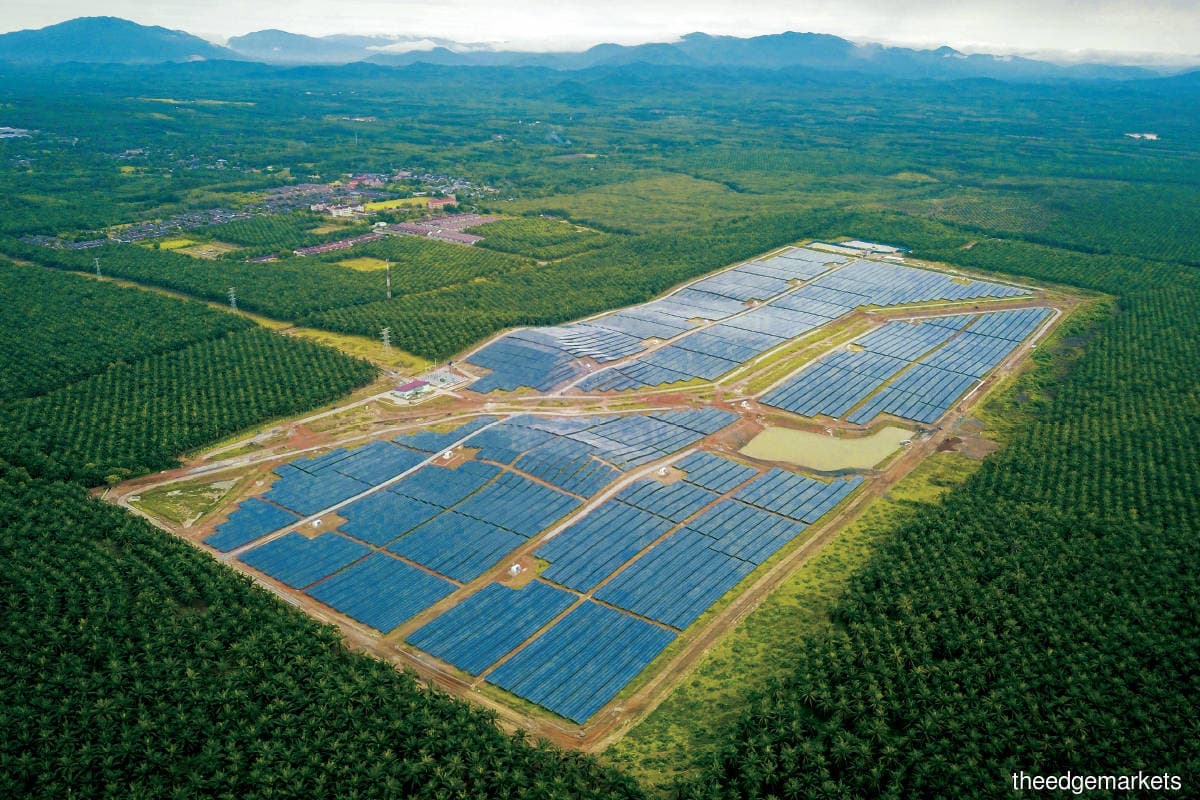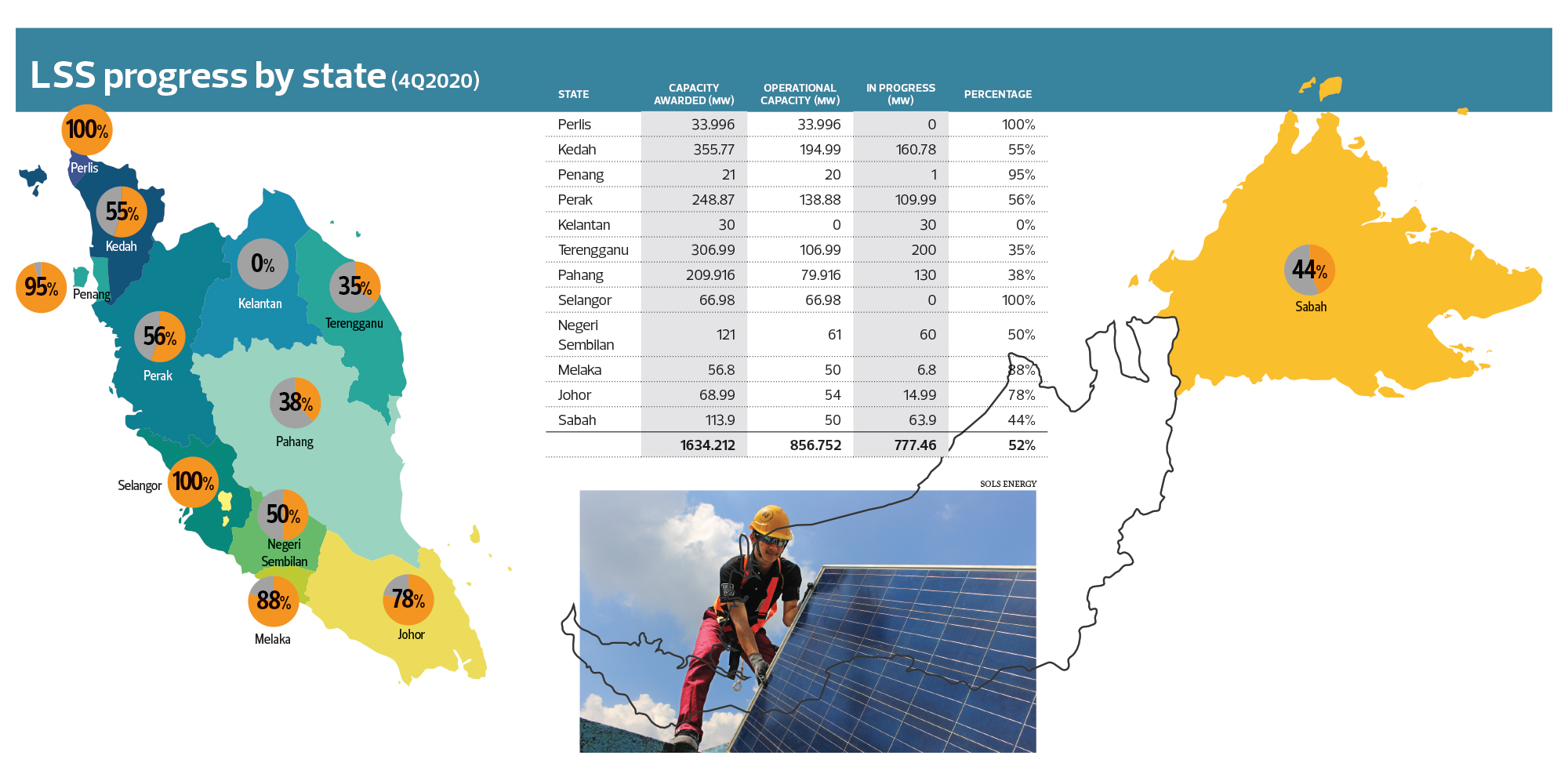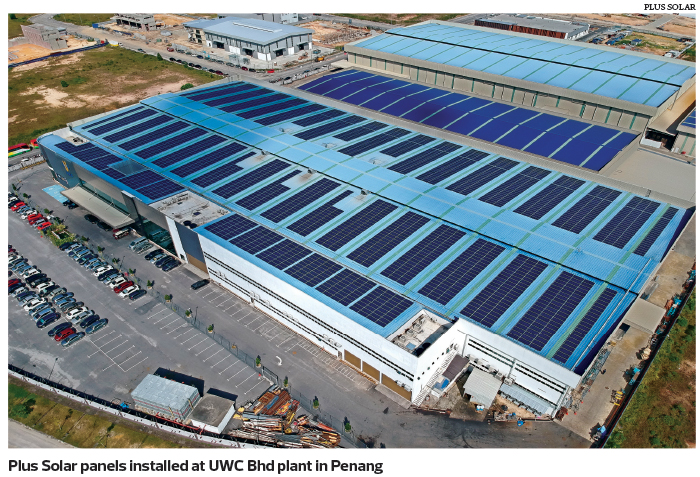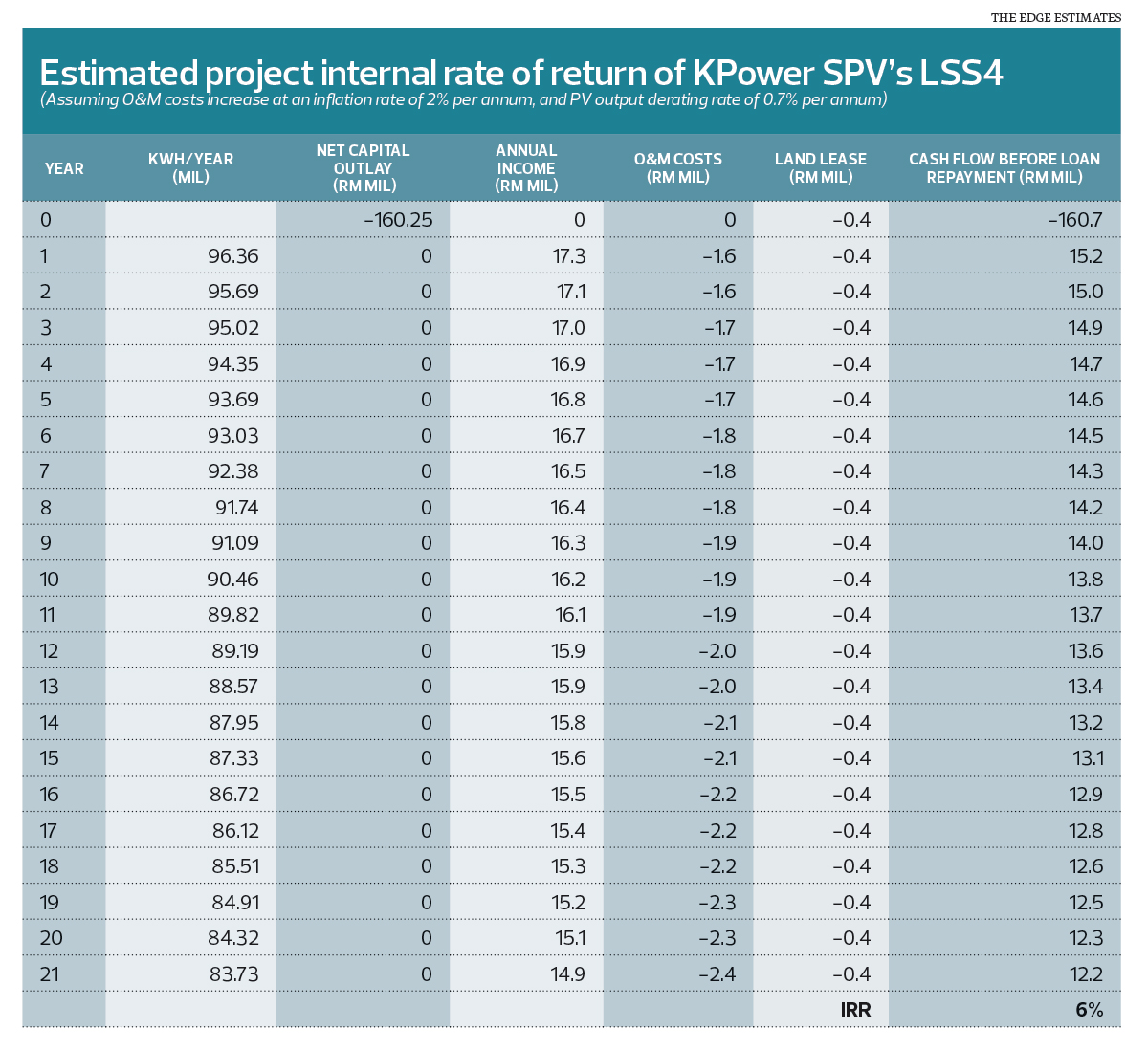
This article first appeared in The Edge Malaysia Weekly on March 22, 2021 - March 28, 2021
AFTER four months, the Energy Commission (EC) announced the winners of the fourth cycle of the Large Scale Solar (LSS4) programme on March 12. The government selected a total of 30 bids to develop solar farms, with export capacity ranging from 10mw to 50mw.
However, the low price range of the LSS4 and the cost of solar modules, which has been rising since last July, raise the question of whether the project would be a boon or bane for the winning bidders.
“When bidding closed last October, a lot of companies put in low bids, as low as 13.99 sen per kWh. Since July, however, the cost of solar modules has been increasing, and I doubt the LSS4 is as lucrative as the previous three rounds,” says a bidder for the LSS4.
The cost of producing electricity from solar power plants has been decreasing over the last decade, and this has led to a surge in solar energy production worldwide. Photovoltaic (PV) solar power has become among the cheapest renewable energy (RE) sources.
Levelised cost of electricity (LCOE) for solar decreased to 6.8 US cents per kW in 2019, from 37.8 US cents per kW in 2010, according to data from the International Renewable Energy Agency.
Hydropower remains the cheapest source of RE in 2019 at 4.7 US cents per kW (about 19.3 sen), followed by onshore wind at 5.3 US cents per kW (21.7 sen). The most expensive RE is from concentrating solar power at 18.2 US cents per kW, followed by offshore wind at 11.5 US cents per kW.
However, owing to the Covid-19 pandemic — which disrupted global supply chains — and a sudden increase in demand for solar modules in the second half of the year, the costs of solar projects have been rising.
A global solar PV module producer says project price in the European Union has increased from around 20 US cents per watt in July 2020 to between 28.66 and 28.96 US cents per watt in February 2021.
The almost 45% increase was due to a rise in costs across the supply chain, from logistics to commodities involved in the production of a PV cell and module, such as polysilicon, glass, silver, aluminium and copper.
Therefore, some market observers point out, the low tariff bids for the LSS4 are quite unrealistic. While the winners were those who put in bids of 17.68 to 24.81 sen per kWh, these prices are still quite low for them to make good returns, they say.
During the first LSS, the lowest bid was 39 sen per kWh; for LSS2, the lowest bid was 33.98 sen per kWh; and, for LSS3, it was 17.78 sen per kWh.
Since 2016, a total of 2,457mw of LSS projects has been awarded to the private sector, including the 823.06mw awarded under the LSS4 programme. The LSS programme has become one of the anchor programmes for Malaysia in boosting the share of RE to the total generation capacity.
The LSS programmes awarded so far make up almost 9% of total installed capacity of electricity generation of 27,409mw in Peninsular Malaysia, Sabah and Labuan. LSS4 alone makes up about 3% of the electricity generation capacity in the peninsula, Sabah and Labuan.
Note that total electricity generation capacity for Peninsular Malaysia stood at 26,132mw as at end-2019, as per the EC’s 2019 annual report. The reserve margin for the peninsula stood at 38% of total capacity, with the maximum demand in 2019 at 18,566mw.
In Sabah and Labuan, total electricity generation capacity stood at 1,277mw as at end-2019, with a 23% reserve margin. Maximum demand in the state and federal territory was 1,001mw. Electricity generation in Sarawak is not governed and distributed by the EC and Tenaga Nasional Bhd.
This means that if the LSS4 programme fails, owing to the high project price of solar plants, the electricity system will not be jeopardised, as there are still high reserve margins in the peninsula, Sabah and Labuan. However, it will be a stumbling block to the country’s journey towards increasing RE’s contribution to the grid.
Solar project prices are high, but there are ways to reduce costs
“Prices of the panels and cables have gone up. This is because of supply and demand and raw material costs, especially the cost of copper for the cables, all of which have contributed to the rise in project costs,” Steven Chiew, founder of solar panel installation company Next Energy, tells The Edge.
“Typically, when it comes to the cost of a solar farm, in terms of EPCC (engineering, procurement, construction, and commissioning), it is pretty much the same across the country. How the players are offering such attractive rates is due to other variable costs, such as land and infrastructure.”
Among the winners of the LSS4 are landowners such as ATK Development Sdn Bhd, MK Land Resources Sdn Bhd, Taiping Solar Sdn Bhd and Asiabina Properties Sdn Bhd. These companies may already have suitable parcels of land in their books that are held at low cost.
KPower Bhd, one of the winners, is partnering with Perbadanan Kemajuan Negeri Pahang (PKNP), to build a 50mw solar plant on PKNP’s land in Pekan, Pahang. KPower and PKNP formed a 95:5 special-purpose vehicle to bid for the project, and the SPV will lease the land from PKNP.
According to KPower’s group managing director Mustakim Mat Nun, the EPCC contract for the group’s LSS4 project in Pekan will be awarded to the group’s own KPower Engineering Sdn Bhd.
“KPower Engineering will do the EPCC. Construction margin should be 10% to 12%,” Mustakim tells The Edge.
He agrees that solar panel prices have been on the rise. Nevertheless, he says, KPower had locked in the price when it made its submission to the EC.
KPower estimated that the project would cost RM160.25 million, with RM153.4 million being the EPCC cost and the rest, financing-related. Eighty per cent of the project cost will be funded via borrowings, and the rest will be from equity injections.
Besides the project cost, the SPV will have to pay PKNP a land lease of RM432,000 a year for the duration of the contract. Annual operation and maintenance (O&M) costs of around 1% of the project cost will also be borne by the SPV over the 21-year period.
It is not known whether the SPV will have to make the lease payments to PKNP or whether the sum will be deducted from the share of profits from the LSS project. The latter is quite unlikely, however, given that PKNP holds only 5% of the SPV.
Note that KPower has an internal rate of return (IRR) target of 7.5%.
Can KPower’s LSS make money?
A 50mw solar power plant will have a 66mw power output, according to industry players. Based on the assumption of four hours of peak radiation a day, the solar plant will be able to produce 96.4 million kWh of electricity a year.
At KPower’s tariff of 17.91 sen per kWh, that means the SPV would be earning RM17.3 million in revenue a year.
Given that 80% of the RM160.25 million project cost will be funded by borrowings, and assuming an interest rate of 3% a year for a period of 15 years, the SPV will have to pay RM10.6 million a year to service the loan.
After deducting O&M cost of RM1.6 million a year and land lease cost of RM432,000, the SPV would have a profit of RM4.67 million a year. While this shows that, at 17.91 sen per kWh, the SPV can still make a profit, it is lower than the RM5.2 million annual profit after tax projected by KPower.
Of course, this calculation is subject to variables such as the assumption of peak radiation a day, the cost of borrowings, the O&M expenditure and lease costs. The project cost is also another variable that determines whether the LSS can make a profit.
Note that the LSS4 projects might not kick off this year. Steven Chan, an analyst from Kenanga Research who covers the industry, says solar project costs are expected to decline in the second half of this year.
“The cost of solar modules is increasing because of the increase in demand in China and India. But construction for LSS4 will start only next year, so it gives time for the price to come down,” Chan tells The Edge.
The LSS4 winners will have to complete their projects and start producing electricity to the grid by 2023. Liquidated and ascertained damages (LAD) will be imposed on the winners if they fail to get the projects up and running by then.
The LAD is thus a penalty that the LSS4 winners would want to avoid by hook or by crook, and the plants will have to be completed and commissioned on time. If the project price of solar plants does not decline as expected, the LSS4 could be a bane for the project winners.
Save by subscribing to us for your print and/or digital copy.
P/S: The Edge is also available on Apple's AppStore and Androids' Google Play.



